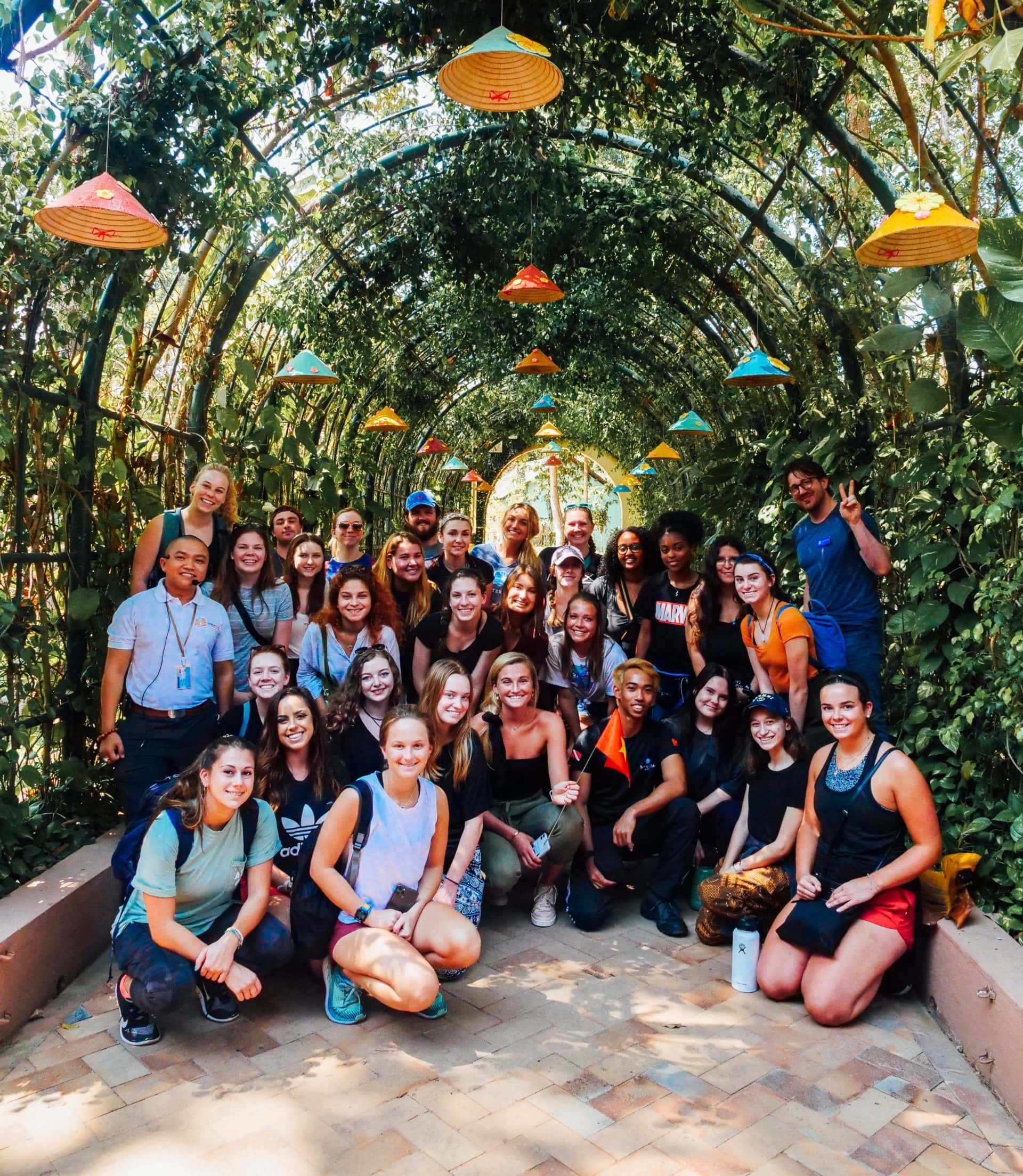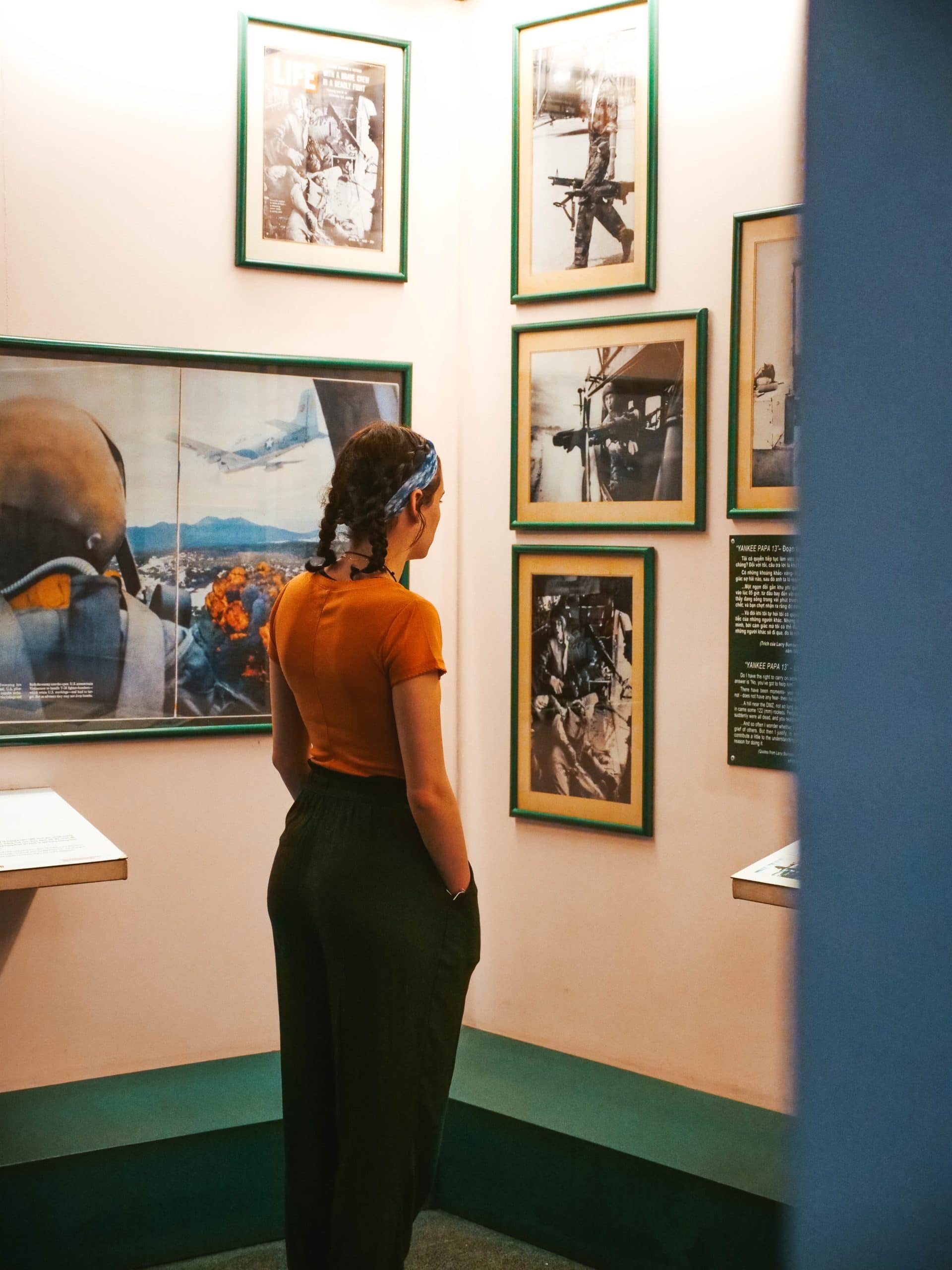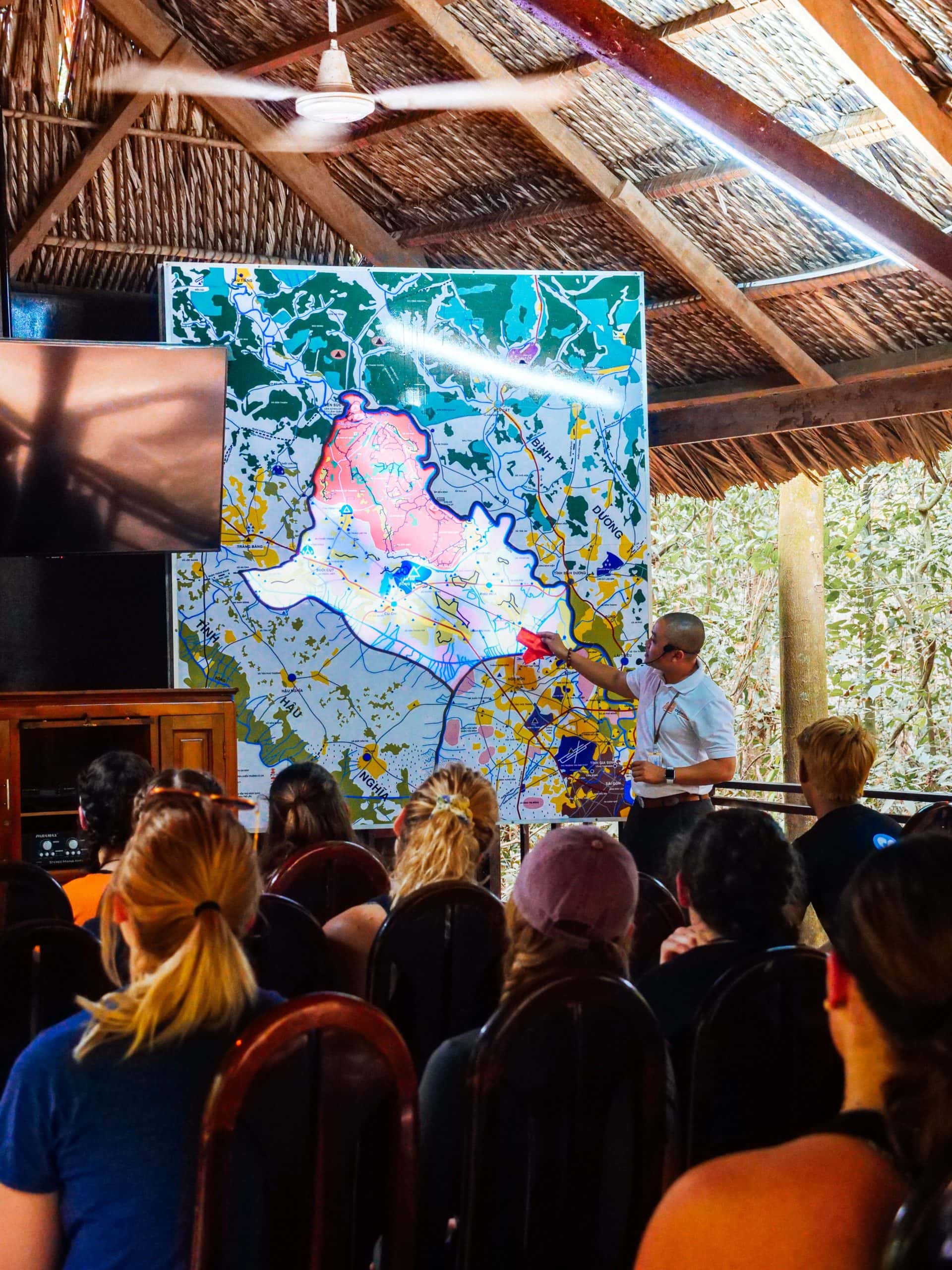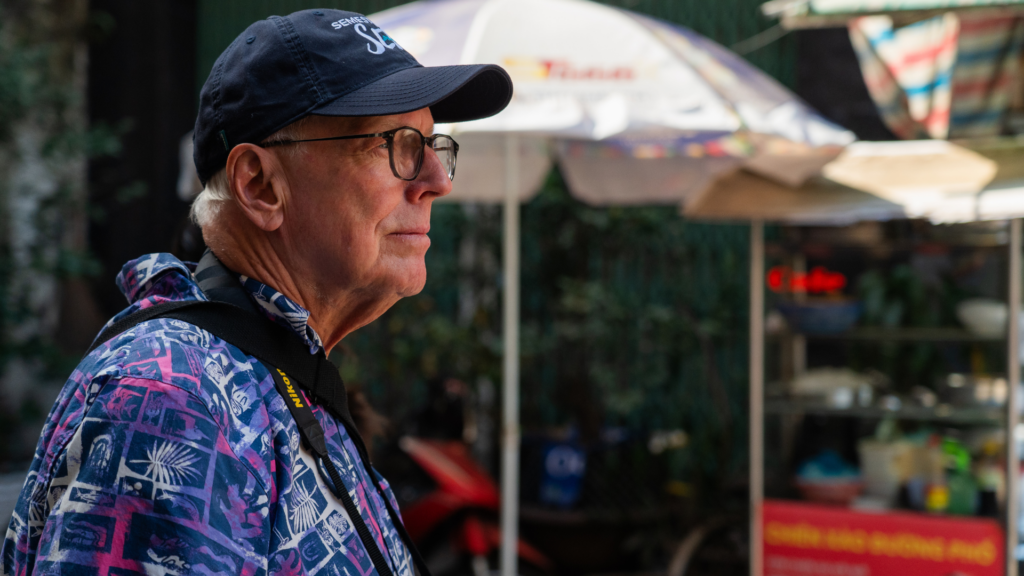
Field Classes are a unique way for students to gain understanding of class material by immersing themselves in the history of a certain culture, and Spring 2020 students enrolled in Introduction to Anthropology were given firsthand insight into the psychological effects of the Vietnam War by visiting the War Remnants Museum, the Cu Chi Tunnels, and the Cao Dai temple.
Professor Stephen Johnson‘s aim for his field class in Vietnam was to provide students with a historical context of America’s involvement in the war.
“The reality is that students don’t know much about the logistics of the war and the specific events of the war. So I wanted to go to the War Remnants museum so they could see images of the war and understand what it was about,” said Dr. Johnson, who teaches at Kyoto University. “I think we achieved that because the museum was very impactful.”
The War Remnants museum, located in the heart of Ho Chi Minh City, provided vivid context of the war and its devastating impact on Vietnamese civilians. Between disturbing photographs illustrating atrocities and firsthand accounts, students were challenged and forced into thoughtful reflection as they wandered throughout the museum. Ryan Ong, a gap-year student from Singapore, made a more personal connection as he toured the museum. “I was in the military in Singapore, so I saw some weapons here that were variants of the ones I had been trained to use, and for similar purposes. It really struck me and had me thinking about whether I would have the courage to say no if I was given orders to kill people, or commit similar atrocities. So that was something that really resonated with me.”

Other students were left with a sense that the education they received about the war was disparate and came from a certain, patriotic point of view , as were the representations present at the War Remnants Museum.
“When we’re in school and we’re growing up, we’re not told about what actually went on, or the effects that the Vietnam War had on the community and the generations to come. Seeing all the deformities that are still occurring today as a result of Agent Orange and bombings is horrifying. When the American military decided on their tactics, it was more than just making a statement against their opponents. It was changing a culture and changing a society as a whole,” said Rebecca Meehan of the University of Delaware. “It’s one thing to fight for something, and it’s another thing to torture. That never needed to happen, and we never learned about that in school.”
After the War Remnants Museum, the next stop was the Cu Chi Tunnels, where students were able to crawl through a few of the tunnels. Professor Johnson thought this was experience was particularly fitting to his anthropology course material. “In class, we learned about how the U.S. military used psychological warfare against the North Vietnamese to exacerbate their religious beliefs so that Vietnamese soldiers inside the tunnels thought they were experiencing dead or angry ghosts. In reality, it was the U.S. military using radio frequencies to mimic ghosts, knowing that was a big part of Vietnamese society.”
Beyond the course material connection, students were fascinated at how intricate the tunnel systems were. Many thought the tunnels were a lot smaller than they had expected, and this was after realizing that many of the tunnels have been expanded for tourists since the war. The final stop on the field class was to the Cao Dai temple, located about 60 miles northwest of Ho Chi Minh City. The bright, bold rainbow colors of the temple and the beautiful interior decorations was a stark contrast to the beginning of the day. A guide took students around the temple spoke to them about the Cao Dai religion, which is a blend of Buddhism, Christianity, Taoism, Islam and Confucianism.
In relation to course material, the tour guide talked about stories relating to ghost hauntings and spiritual possessions, and told personal stories from his life and his family’s life to give students better insight into the cultural belief system regarding ghosts. Upon leaving to return back to the ship, Dr. Johnson noted that, ” today really hit the mark with hitting the course material with the experiential component, and I think students will be able to make a lot of connections with the things they’re learning in class and the things they saw today.”



